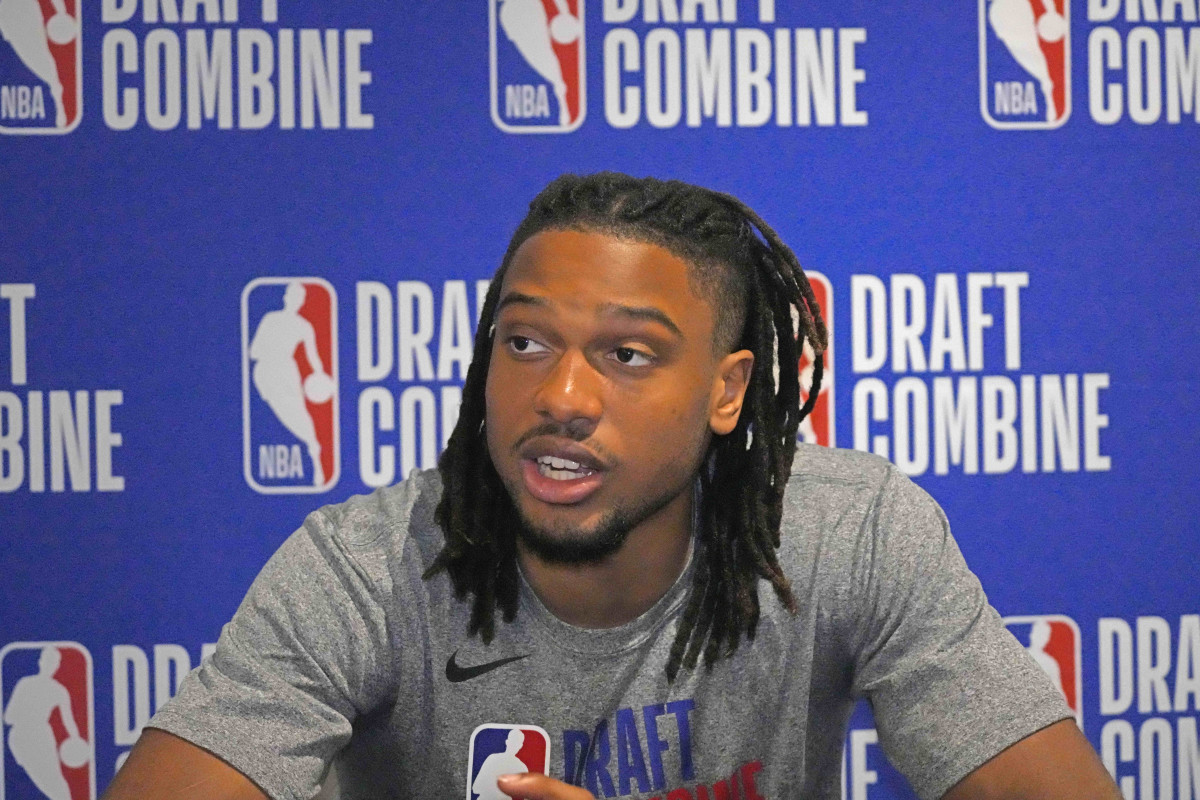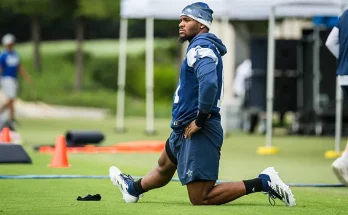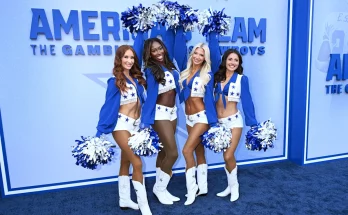The 2025 NBA Draft is shaping up to be one of the most intriguing in recent memory, with a mix of elite prospects, seasoned college stars, and international talents vying for their place in the league. Among them is Tennessee Volunteers guard Chaz Lanier, whose stock has been steadily rising after a breakout season in Knoxville. According to ESPN, Lanier is expected to be selected by a “rising young team with upside,” a fitting destination for a player whose game is built on versatility, scoring prowess, and untapped potential.
Lanier’s journey to this point has been anything but conventional. A late bloomer in the college basketball landscape, he spent his first three collegiate seasons at North Florida before transferring to Tennessee for his final year. The move proved to be a masterstroke, as he flourished under Rick Barnes’ system, showcasing his ability to thrive in a high-major environment. His smooth shooting stroke, crafty finishing, and underrated playmaking caught the attention of NBA scouts, making him one of the most intriguing prospects in this draft class.
What makes Lanier such an appealing prospect for a young, up-and-coming NBA team? For starters, his offensive skill set is tailor-made for the modern NBA. Standing at 6’4” with a solid frame, he has the size to play either guard position, though he is most comfortable operating as a scoring combo guard. His three-point shooting is perhaps his most translatable skill—Lanier shot over 40% from deep in his final college season, demonstrating both consistency and range. He moves well without the ball, excels in catch-and-shoot situations, and has a quick release that allows him to get his shot off against tight defenses.
Beyond his shooting, Lanier has shown flashes of being a capable secondary playmaker. While he’s not a traditional point guard, his ability to attack closeouts, make smart reads in pick-and-roll situations, and find open teammates adds another dimension to his game. Teams looking for a plug-and-play offensive weapon who can space the floor while also contributing as a ball-handler will find plenty to like in Lanier’s profile.
Defensively, Lanier is still a work in progress, but he has the tools to develop into a solid contributor on that end. His lateral quickness is adequate, and his effort level is consistently high—a trait that should endear him to coaches at the next level. While he may never be an All-Defensive team candidate, his size and instincts suggest he can hold his own against NBA guards, especially if he lands in a system that emphasizes team defense and player development.
The idea of Lanier joining a “rising young team with upside” is particularly intriguing because it aligns perfectly with his developmental trajectory. Unlike some one-and-done prospects who are thrust into high-pressure situations from day one, Lanier’s path has been one of gradual improvement. He’s a player who has gotten better every year, suggesting that his best basketball is still ahead of him. A team like the Orlando Magic, Oklahoma City Thunder, or Detroit Pistons—all franchises with promising young cores—could provide the ideal environment for him to grow into a meaningful role.
For example, the Orlando Magic have been building around Paolo Banchero and Franz Wagner, two dynamic forwards who need reliable shooters around them to maximize their playmaking. Lanier’s ability to knock down threes and play off the ball would make him an excellent fit alongside them. Similarly, the Oklahoma City Thunder, with their emphasis on positionless basketball and player development, could unlock even more of Lanier’s potential as a secondary creator. Even a team like the San Antonio Spurs, known for their player development under Gregg Popovich, could view Lanier as a valuable piece to complement Victor Wembanyama’s generational talent.
Another factor working in Lanier’s favor is his maturity and work ethic. By the time he enters the NBA, he’ll be 23 years old—older than many of his draft peers—but that also means he brings a level of polish and experience that younger prospects may lack. His time at North Florida and Tennessee has prepared him for the grind of professional basketball, and his willingness to adapt and improve bodes well for his long-term success.
Of course, there are areas where Lanier will need to prove himself at the next level. While his shooting is elite, he’ll need to show he can create his own shot consistently against NBA-level defenders. His handle is good but not elite, and he can sometimes struggle against quicker, more physical defenders. Additionally, his defensive consistency will be tested against the best guards in the world. However, these are all areas where the right developmental system can help him make strides.
The 2025 NBA Draft is still months away, and Lanier’s stock could fluctuate based on pre-draft workouts and interviews. However, the buzz around him suggests he’s firmly on NBA radars as a potential first-round pick. For a player who wasn’t even on many draft boards a year ago, that’s a testament to his hard work and the impact he made at Tennessee.
Ultimately, Chaz Lanier represents the kind of player who may not be a franchise cornerstone but can absolutely be a key piece for a team on the rise. His shooting, basketball IQ, and adaptability make him a low-risk, high-reward selection for a young squad looking to add depth and upside. Whether he lands with a team like the Magic, Thunder, or another up-and-coming franchise, his journey from mid-major standout to SEC star to NBA prospect is a reminder that talent can emerge from anywhere—and that the right system can unlock a player’s full potential.
As the draft approaches, all eyes will be on where Lanier lands. One thing is certain: whichever team selects him will be getting a player with the skill, work ethic, and untapped potential to become a valuable contributor for years to come.



